- Home
- Anna Kavan
Machines in the Head
Machines in the Head Read online
ANNA KAVAN (1901–1968) was born Helen Woods to wealthy British parents in Cannes. The family moved often between Europe and the United States and, when she was ten, Kavan was sent to boarding school in the United Kingdom. The following year her father committed suicide. In 1920, Kavan married a railway engineer and the two moved to Burma, where their son, Bryan, was born. The couple separated in 1925, and she returned to London to attend art school and began using heroin. In 1928 she married the artist Stuart Edmonds, and the next year published her first novel, A Charmed Circle. While married to Edmonds, she published six books as Helen Ferguson, and in 1935 they had a daughter, Margaret, who died shortly after birth. They soon adopted a daughter, Susanna. In 1938, as the marriage deteriorated, Kavan attempted suicide and was admitted to a psychiatric clinic in Switzerland. Adopting the name Anna Kavan (after a character who had appeared in two of her earlier books), she would write about this experience in the short-story collection Asylum Piece (1940), which was met with acclaim. She would go on to write criticism, journalism, dozens of stories, and several novels as Kavan, including her most successful book, the novel Ice (1967), which was published the year before she died of heart failure.
VICTORIA WALKER teaches in the English Department of Queen Mary, University of London, and chairs the Anna Kavan Society. She has published on twentieth-century women’s writing and is currently working on the first critical study of Kavan.
MACHINES IN THE HEAD
Selected Stories
ANNA KAVAN
Edited by
VICTORIA WALKER
NEW YORK REVIEW BOOKS
New York
THIS IS A NEW YORK REVIEW BOOK
PUBLISHED BY THE NEW YORK REVIEW OF BOOKS
435 Hudson Street, New York, NY 10014
www.nyrb.com
This anthology copyright © 2019 by the Estate of Anna Kavan
Original copyright dates: Asylum Piece © 1940; I Am Lazarus © 1945; A Bright Green Field © 1958; Julia and the Bazooka © 1970; My Soul in China © 1975 Foreword copyright © 2019 by Victoria Walker
All rights reserved.
Cover image: Gertrude Abercrombie, Reverie, 1947; photograph: Illinois State Museum
Cover design: Katy Homans
The stories in this anthology were first published in volume form in Great Britain in 2019 by Peter Owen Publishers.
Library of Congress Cataloging-in-Publication Data
Names: Kavan, Anna, 1901–1968, author. | Walker, Victoria (Victoria Carborne) editor.
Title: Machines in the head : selected stories / by Anna Kavan, edited by Victoria Walker.
Description: New York City : New York Review Books, [2019] | Series: New york review books classics
Identifiers: LCCN 2019038488 (print) | LCCN 2019038489 (ebook) | ISBN 9781681374147 (paperback) | ISBN 9781681374154 (ebook)
Classification: LCC PR6009.D63 A6 2019 (print) | LCC PR6009.D63 (ebook) | DDC 823/.912—dc23
LC record available at https://lccn.loc.gov/2019038488
LC ebook record available at https://lccn.loc.gov/2019038489
ISBN 978-1-68137-415-4
v1.0
For a complete list of titles, visit www.nyrb.com or write to:
Catalog Requests, NYRB, 435 Hudson Street, New York, NY 10014
CONTENTS
Title Page
Copyright and More Information
Foreword
from ASYLUM PIECE (1940)
Going Up in the World
The Enemy
Airing a Grievance
The Summons
At Night
Machines in the Head
Asylum Piece II
The End in Sight
There Is No End
from I AM LAZARUS (1945)
Palace of Sleep
The Blackout
Face of My People
The Gannets
Our City
from A BRIGHT GREEN FIELD (1958)
A Bright Green Field
Ice Storm
All Saints
from JULIA AND THE BAZOOKA (1970)
The Old Address
A Visit
Fog
World of Heroes
Julia and the Bazooka
from MY SOUL IN CHINA (1975)
Five More Days to Countdown
Previously Unpublished
Starting a Career
FOREWORD
I can’t keep on all my life writing in the same way. . .The world now is quite different and so is my life in it. One reacts to the environment and atmosphere one lives in, one absorbs outside influences, and my writing changes with the conditions outside.1
ANNA KAVAN BEGAN LIFE as a fictional character, the heroine of minor novelist Helen Ferguson’s Bildungsroman, Let Me Alone (1930). Ten years later her author began to publish under the name of her former protagonist, taking the name Anna Kavan as her own. This shift from literary character to living writer reflects significantly on Kavan’s writing, for the complexity of the relationship between reality and fiction is a preoccupation of her novels, stories and journalism. One of the few constancies of her writing after her name change was her determination to experiment, something that did not always make her work popular in her lifetime. Her own description of her writing practice above – ‘I can’t keep on all my life writing in the same way’ – lays out her motives for this tendency towards change. When she began writing as Anna Kavan, Helen Ferguson’s style underwent its first dramatic shift: her characters became nameless and enigmatic, her plots became scanty and her themes inclined towards darkness, fantasy, madness and dystopia. But she did not abandon realism, returning to her earlier style in several of her later novels and often writing in her own particular, peculiar hybrid of realism and fantasy. She was well aware that there was limited appetite for what she called ‘my sort of experimental writing’, but despite decades of difficulty getting her work into print she refused to replicate the style that had brought her literary success in the 1940s, preferring always to try something new or to rework a previous mode of writing. This shifting style and her long publishing career (which lasted from 1929 to 1967) make it difficult to understand her work within any particular tradition, and critics have sometimes accused her of writing only and obsessively about herself. But to consider her fiction outside the literary and intellectual climate of its times is to miss much of its value; in her terms the ‘environment and atmosphere’ she lived in shaped her writing. reading stories brought together from across her career, as in this collection, illustrates how Kavan’s fiction was shaped by the major social, political and cultural upheavals of the mid-twentieth century as much as by her personal experiences of mental illness, drug addiction and heartbreak.
•
Kavan’s deliberate neglect of fictional plot and character development seems to have encouraged an impulse to embellish her life story, and during the fifty years since her death her biography has been expansively embroidered. She was born Helen Woods in Cannes in 1901, the only child of affluent British parents, and named Helen after her mother. Their wealth must have dwindled, for when Helen was a small child they moved from Somerset to Rialto, California, to establish an orange farm. The venture was moderately successful, but soon her father abandoned the family, disappearing and leaving them unsupported; a year later he was dead, having thrown himself from the prow of a ship in a Mexican harbour. Helen had been sent back to England, and it is not certain how much she knew of the rift between her parents or their financial difficulties; much of her later childhood was spent at boarding school.
When she was only nineteen she married Donald Ferguson, ten years her senior, and moved with him to colonial Burma where he was a railway administrator.
The couple were ill matched, and their marital enmity would provide plenty of material for her later fiction. Not long after their son Bryan was born Helen returned with him to England, and the marriage was over. She studied painting in London, pursued her writing and travelled in continental Europe. While in France she met and began a love affair with Stuart Edmonds, the British artist who would eventually become her second husband. By this time she had already begun using heroin, an addiction that appears likely to have begun as a prescription of morphine for pain relief or depression.
For most of the 1930s the Edmonds lived quietly in the Chilterns, writing, painting and enjoying village life; Bryan visited in school holidays. Helen published six novels under her previous married name, Ferguson, garnering only moderate sales and reviews. During this period she also exhibited her paintings several times, and although she is little known as a visual artist she would continue to paint throughout her life. In 1935 she gave birth to a child who died soon after; the couple immediately adopted a daughter. Towards the end of the decade the marriage had soured, and Stuart had begun an affair. Severely depressed, Helen attempted suicide and was sent to recover at a private Swiss clinic. Soon after her return to England she met Ian Hamilton, a playwright who had been living for many years in New Zealand. They began a cautious affair, for he was still married and had plans to return to New Zealand, and she was still under the care of a psychiatrist. Helen’s experience of depression and psychiatric treatment had inspired a collection of stories – much sparser, darker and more fantastic than her earlier writing – which would become Asylum Piece (1940), the first book she published as Anna Kavan. Not long after she had submitted the manuscript to her publisher, she and Hamilton left the country, travelling in Scandinavia and, after war was declared, crossing the Atlantic to New York. They journeyed down the East Coast of the United States to Mexico City and eventually settled in La Jolla, California, for seven months.
Ian Hamilton finally returned to New Zealand, and Helen set out towards Singapore en route to join her mother in South Africa. The American architect and patron of the arts Charles Fuller was travelling on the same boat, and when travel restrictions prevented them from reaching their destination they spent some months together in what was then the Dutch East Indies. Fuller returned to New York in November, and Helen joined him, enjoying the renown of her literary success with Asylum Piece, which had been published to critical acclaim in Britain. It was during this short spell in New York that she began using the name Anna Kavan in her personal life. Fuller introduced her to other writers and artists, but social excitement did not compensate for financial insecurity and deep depression, and she attempted suicide again.
Missing the emotional support that Ian Hamilton had given her, Kavan wrote asking to join him in New Zealand, and she arrived in the country early in 1941. She spent nearly two years there, living self-sufficiently with Hamilton in a quiet village; it was a peaceful interlude without heroin or emotional drama. But Hamilton was profoundly pacifist, and New Zealand had little tolerance or understanding for conscientious objectors at this time. As it became increasingly likely that he would be interned for refusing to fight, leaving Kavan alone and without a home, she attempted again to reach her mother in South Africa and sailed for England. During the journey, another ship in her convoy was torpedoed and sunk, but she arrived safely in January 1943 only to find that she was unable to obtain a travel permit and was to be conscripted for war work. She took a job at the Mill Hill Emergency Hospital, working with soldiers suffering from war neurosis, but left to become an assistant at the arts journal Horizon, writing literary reviews and publishing several stories and articles in the magazine. During this time she was using cocaine and amphetamines and she settled into an almost unbroken twenty-five years of controlled heroin addiction. She began to be treated by Dr Karl Bluth, a German writer and psychiatrist whose anti-fascist writings had necessitated his flight from Nazi persecution in the 1930s. Their relationship would evolve into a deep friendship and intellectual bond; they would collaborate on writing projects and Bluth would prescribe Kavan’s heroin for the next twenty years. It is not clear whether or not the two were lovers, but Bluth’s wife certainly resented the amount of time they spent together.
By the end of the war Kavan had lost both her children; her son had enlisted as a paratrooper and was killed, and she was denied custody of her adoptive daughter owing to her perceived mental instability. Serious heart problems forced her to give up the job at Horizon. The stories she had published in magazines during the war were collected with some others in I Am Lazarus (1945), which was well received, but the critical failure of her most surrealist work, the novel Sleep Has His House (1947), made finding a publisher difficult for some years. She and Dr Bluth collaborated on an absurdist political satire, The Horse’s Tale (1949), which was distributed only privately to friends after Bluth’s money-saving scheme of having the book printed in Germany prevented its sale in the UK.
In 1950 Kavan’s mother died, and, despite the immense wealth of her third husband, small provision had been made for Kavan in her will. The allowance that she had come to rely upon was cut drastically, and she felt disinherited, leaving her bitter towards the memory of her mother. To supplement her income she renovated several houses in West London and rented rooms to friends. She met the independent publisher Peter Owen, and he threw his support behind her writing, publishing her novel Eagle’s Nest (1956) and a collection of stories A Bright Green Field (1958).
As both Kavan and the twentieth century moved into their seventh decade, she continued to take an interest in emerging culture and counterculture; her late writing shows the influences of mainstream film and television as well as contemporary avantgarde literature and science fiction. She revisited her early Helen Ferguson novel in which the character ‘Anna Kavan’ had first appeared, reworking a section of it into a shorter experimental narrative, Who Are You? (1963), but she was disappointed by its muted reception. Karl Bluth’s death in 1964 precipitated another deep depression, but she found some respite from her grief in writing. Her dystopian novel Ice (1967) was her most successful book in two decades, but she had only a year to enjoy this late acclaim before she died of a heart attack in December 1968.
•
Kavan’s writing is not to everyone’s taste. Reading her work can be disorientating and discomforting; her narratives shift disconcertingly between past and present tense, first and third person. Her characters are often disagreeable, misanthropic, self-absorbed, priggish or delusional, and the paranoia of her nameless narrators is infectious. In one of her literary reviews she describes how the ‘short story is like a small room in which is concentrated a brilliant light’, and she found this form well suited to the intensity of her writing.
This current anthology draws together a selection of her stories from across nearly thirty years of writing, including the previously unpublished ‘Starting a Career’. The extraordinary range of her style and the shifting ‘environment and atmosphere’ of the twentieth century are fully evident here: oblique portraits of crushing depression and incarceration from Asylum Piece (1940); moving evocations of wartime trauma from I Am Lazarus (1945); fantastic and surrealist pieces from A Bright Green Field (1958); and tales exploring altered states of consciousness from the posthumously published Julia and the Bazooka (1970). But each of these modes inflects the others: elements of science fiction begin to emerge at the beginning of the 1940s in ‘Going Up in the World’ and in her 1950s stories; the Blitz becomes surreal and hallucinatory in ‘Our City’; and war continues to haunt the drug culture of late-1960s ‘Julia and the Bazooka’.
As in all her writing, climatic atmosphere and emotional atmosphere suffuse these stories; extremes of heat and cold, gathering storms, enveloping fog and natural disaster provide the backdrop to intense human experience, and the boundary between inner and outer worlds becomes unstable. Her characters are often striving for, or mourning the loss of, love and understanding. F
ailed or thwarted connections are the raw substance of her writing: the memory or dream of a friend and lover in ‘Asylum Piece II’; Kling’s longing for communication with the dead in ‘Face of My People’; the mute and languid bond of narrator and leopard in ‘A Visit’. But there is also some playful, dark humour to be found in these tales, for Kavan loved absurdism, and the excessive horror in a story such as ‘The Gannets’ tips into misanthropic and hallucinatory bathos in ‘The Old Address’. Several of the many unpublished manuscripts that accumulated during Kavan’s lifetime have already been published posthumously; ‘Starting a Career’, a futuristic spy thriller undoubtedly influenced by James Bond, appears here for the first time. This story’s wintry and futuristic setting, its tropes of genre fiction and its amoral protagonist who sets out to become the world’s greatest enigma all recall her final novel Ice.
Kavan can only be described as a British writer, but she did not embrace her nationality. The periods of her life spent living in the United States, Burma and New Zealand, and her travels across Europe, Asia, South Africa and Mexico seem only to have emphasized her sense that, wherever she was in the world, she felt an outsider. Exile, homelessness and alienation are constant themes in her work. Her international outlook contributes to the difficulty in tracing her influences, because she read and experienced all sorts. As her Horizon reviews testify, she admired modernist writing, especially James Joyce, Virginia Woolf and T. S. Eliot; her work has been described as ‘Kafkaesque’, and she certainly considered Kafka to be one of the greatest writers. Her portraits of ill-fated and marginalized outsiders recall Jean Rhys, Jane Bowles, even Carson McCullers, and her experiments with surrealism beg comparison with other surrealist women writers such as Leonora Carrington, Unica Zürn and Ithell Colquhoun. There are shades of the weird fiction of H. P. Lovecraft in her work, and she draws on the rich legacy of gothic fiction, recalling stories by Isak Dinesen or Silvina Ocampo. Anaïs Nin, a great admirer of her work, observed parallels between their more experimental fiction, and her writing has some of the oblique intensity of Clarice Lispector. Her later work can also be compared with that of a younger generation of post-war British experimental writers, especially Ann Quin, Alan Burns and Muriel Spark. She was a fan of Brian Aldiss’s writing and he of hers; J.G. Ballard and Doris Lessing both admired her, and their ‘inner space fiction’ recalls her work. She continued to engage with the work of continental European writers, including the Nouveau Roman; ‘A Visit’ undoubtedly engages with German writer Christoph Meckel’s story ‘The Lion’. These are only a handful of the multiple comparisons one can draw between Kavan’s writing and that of other authors, and it is this diversity that makes her work so distinctive, rather than its isolation. Despite her relative obscurity, many authors today continue to draw inspiration from her.

 Machines in the Head
Machines in the Head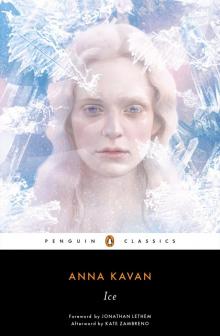 Ice
Ice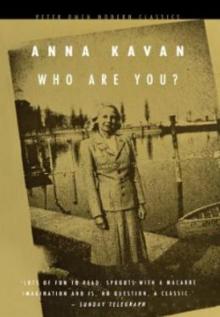 Who Are You?
Who Are You?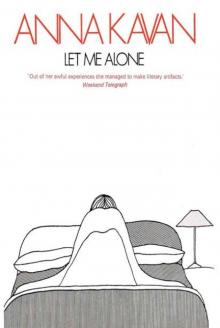 Let Me Alone
Let Me Alone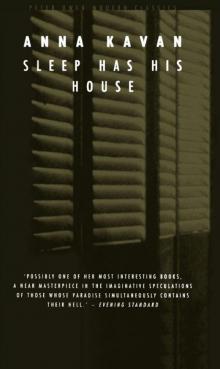 Sleep Has His House
Sleep Has His House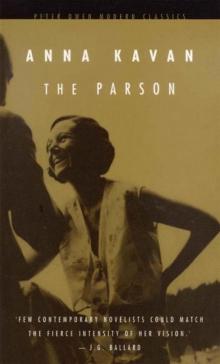 The Parson (Peter Owen Modern Classic)
The Parson (Peter Owen Modern Classic)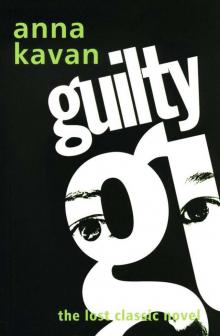 Guilty: The Lost Classic Novel
Guilty: The Lost Classic Novel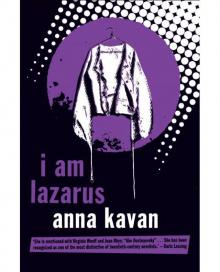 I Am Lazarus (Peter Owen Modern Classic)
I Am Lazarus (Peter Owen Modern Classic)